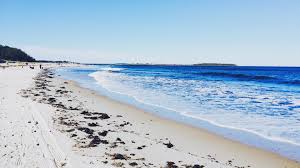Plastic in the Beach 🏖
السَّلاَمُ عَلَيْكُمْ وَرَحْمَةُ اللهِ وَبَرَكَاتُهُ
Hello dear readers! This is my 3rd entry for a reflective journal on sustainable issues or practices. The reason I chose this topic is because it is a place where I love to let my hair down and recharge my batteries. Normally, it is calm and serene there. To look around me and see the beauty of mother nature at it's finest.
Sadly, its beauty is becoming ugly because of the effects of plastics pollution. One of the objective sustainable development goals is to protect our nature from being harmed. Therefore, in this entry, I would like to explain this issue in detail.
Plastic is seen everywhere these days and has become one of the most used substances, from supermarkets even to common households. Why? The main reason is that we can get plastic at a cheap price and it costs less than other alternatives like cloth and paper. Other than that, it comes in a variety of shapes and sizes that we can easily shape. Therefore the term ‘plastic pollution’ means the manifestation of unsolicited foreign substances, which in this case are plastic, in something. As far as everyone knows, plastic pollution can threaten ocean health, marine species health, food safety and quality, human health and contribute to climate change. But how?
Plastic waste is now the most prevalent type of litter in the ocean, making up 80% of all marine debris discovered from surface waters to deep-sea sediments. Plastic debris’s most apparent effects are the ingestion, suffocation and entanglement of hundreds of marine animals including seabirds, whales, fish and turtles that mistake plastic garbage for prey. Most of them perish from malnutrition as their stomachs fill with plastic. They also suffer from lacerations, infections, impaired swimming capacity and internal injuries. Floating plastics also help in the transport of invasive marine species, thereby endangering marine biodiversity and the food chain.
Moreover, microplastics have been identified in tap water, salt, beer as well as in all samples taken in the world’s seas, including the Arctic. Several chemicals used in the manufacture of plastic products are known to be carcinogenic and to disrupt the body’s endocrine system, causing developmental, reproductive, neurological, and immune disorders in both humans and wildlife. Microplastics have recently been found in human placentas but further study is needed to determine whether this is a prevalent concern.
Toxic pollutants can also build up on the surface of plastic after extended contact to seawater. When marine creatures ingest plastic garbage, the toxins enter their digestive systems and build in the food chain over time. The transmission of pollutants between marine species and humans through consumption of seafood has been identified as a health hazard, and research is ongoing.
You may be wondering, what is the BEST SOLUTION that can be done to cope with this problem? The best solution that we can do is to minimize our consumption of single-use plastics. It may include plastic bags, cups, water bottles, straw, take-out containers, dry cleaning bags and any other plastic item that we used only once and then discarded. We can resort to utilizing reusable versions of those items. If by means you have to use single-use plastics, always be sure to recycle them properly. You can check Earth911’s recycling directory or check with your local recycling center to know the forms of plastic they accept to recycle. By doing that, we can help keep plastic out of the water and minimize the quantity of new plastic production. It’s challenging at first, but after some time I am getting used to it.
At the same time, I do believe that the government and related institutions have to make an effort to develop goods and reconsider their usage and disposal in order to decrease microplastic waste from pellets, synthetic fabrics and tyres. Consumers and society must change their purchasing habits to be more environmentally friendly. This will require solutions that go beyond trash management and take into account the whole lifecycle of plastic items, from design to infrastructure and household usage.
Lastly, as I learned many things from this topic, I would like to encourage me, you and people who are reading this to save our world and don’t do harm to marine wildlifes because they also have the right in this world to live peacefully and healthily. We must all work together to reduce pollution so that the future generations can live in a clean and healthy environment. As the saying goes, precaution is better than cure. Lets hands on hands together to save the world by recycling plastics and safeguarding the environment for a brighter future.



Comments
Post a Comment